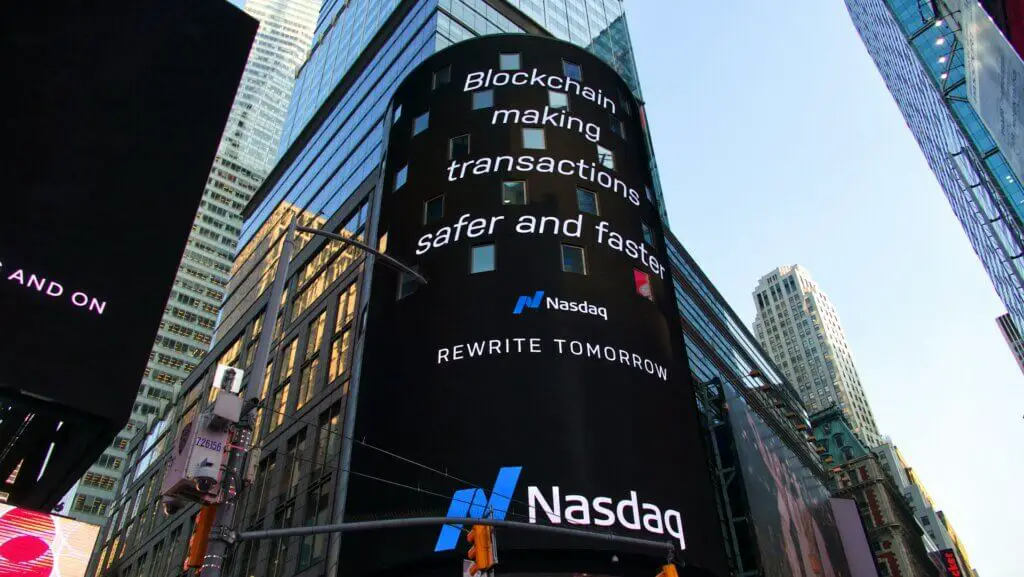We may earn money or products from the companies mentioned in this post.

Blockchain Technology Use Cases Explored
One of the newest transformative digital tools is a technology known as blockchain. It’s a concept that has piqued the interest of tech enthusiasts and professionals alike, altering perceptions of how data can be stored, shared, and protected. Imagine a world where transactions are openly recorded, yet securely encrypted; a space where trust is built-in, not just promised. Our journey to understanding blockchain starts with peering into its very essence: a decentralized ledger that is poised to redefine interactions in the digital age. From financial exchanges to contract agreements, blockchain stands as a wave of innovation. As we delve into the intricacies of this ever adapting technology, let’s unravel the myriad of ways in which it is sculpting a new frontier for our global networks.
Understanding Blockchain Fundamentals
Blockchain Explained
In the ever-evolving realm of technology, standing at the forefront of innovation is Blockchain. Deconstructed, it’s a digital ledger that’s decentralized and distributed across a network of computers, infamously dodging any single point of failure or control. Picture a spreadsheet cloned thousands of times across a network, then imagine this network is designed to regularly update this spreadsheet and you’ll have a glimpse into the backbone of blockchain technology.
But how does it function, exactly? Each block in a blockchain contains a number of transactions; and every time a new transaction occurs on the blockchain, a record of that transaction is added to every participant’s ledger. The decentralized database managed by multiple participants is known as Distributed Ledger Technology (DLT). Blockchain is a type of DLT where transactions are recorded with an immutable cryptographic signature called a hash. This means if one block in one chain was changed, it would be immediately apparent it had been tampered with. To prevent fraud, the transaction must be approved by a consensus among the network’s members, making the system highly resistant to malicious activity.
Furthermore, each transaction is encrypted and has a link to the previous transaction, creating a chain of blocks – hence, blockchain. With smart contracts automating agreements as soon as conditions are met, the need for a middleman is abolished, paving the way for faster, more cost-effective deals that are locked in code. This structure not only boosts the speed and efficiency of transactions but also elevates transparency and security, propelling blockchain beyond its notorious applications in cryptocurrency into industries like finance, healthcare, and even governance. By harnessing blockchain, enthusiasts and enterprises are reshaping the concept of digital trust, propelling us into a new age of internet fidelity.

Blockchain in Cryptocurrency
Blockchain technology is not just an underpinning for cryptocurrencies; it’s a foundational change in the way digital money moves across the globe. Digital currencies like Bitcoin and Ethereum function on the blockchain, ensuring peer-to-peer transactions without the need for traditional financial intermediaries. This significantly lowers the cost of transfers, making transactions more efficient and accessible, even for those outside the conventional banking system. Furthermore, this paves the way for financial inclusion, bringing the unbanked and underbanked into the digital economy through mobile technology and blockchain wallets.
The advent of blockchain technology in digital money has also enabled new models of financing and investment. Take Initial Coin Offerings (ICOs) as an example, they allow startups to raise capital by issuing their own tokens. This democratizes investment opportunities and accelerates innovation by providing liquidity in markets that were previously hard to access. On the user side, blockchain facilitates the ownership and transfer of digital assets through tokens, which can represent anything from currencies to shares in a company, or even rights to a piece of art. Tokenization turns the complex ownership structures and rights of assets into manageable, transferable and easily understandable units on the blockchain.
Lastly, the real-time, traceable nature of blockchain transactions is writing a new chapter in the ledger of digital financial integrity. Thanks to blockchain, every transaction is an open book for those who have permission to see it, but an unbreakable vault to unauthorized access. This enhances not only the security but also the auditability of financial transactions, making blockchain an undeniable cornerstone of tomorrow’s digital financial landscape. Forget the era of multiple-day settlement periods and opaque records; blockchain makes the flow of digital money transparent like a stream of water – clear, directed, and indisputable.

Smart Contracts and Decentralized Applications
Conceptually, smart contracts are self-executing contracts with the terms of the agreement directly written into lines of code. They exist across a distributed, decentralized blockchain network, which ensures they run exactly as programmed without any possibility of downtime, censorship, fraud, or third-party interference.
Here’s how they work: smart contracts are written as a set of instructions and rules that are automatically enforced by the blockchain. Picture a standard contract that stipulates a “if-then” scenario – if one party fulfills their end of the deal, then the other party is obliged to deliver the agreed upon payment or service. Smart contracts take this one step further: the contractual stipulations are embedded into the code, so the action is performed automatically once the conditions are met. This is akin to a vending machine logic—input the correct amount, and your selected item is dispensed, no human interaction required.
In practice, let’s say you’re renting a car. A smart contract can be programmed to transfer access to the car once payment is received. When that transaction is confirmed on the blockchain, the digital key would be released to the renter. If the renter doesn’t make the payment, they don’t receive the key, and the rental agreement is voided. This kind of programmable enforcement eradicates the need for middlemen like lawyers or notaries, potentially reducing costs and increasing speed for various transactions.
What accelerates the potential of smart contracts is their versatility. Deployed across numerous sectors, these digital agreements can trigger financial transactions, automate administrative tasks, and validate conditions without human oversight. In sectors like real estate, this could translate to deeds and titles being transferred upon receipt of payment without the weeks-long processes currently endured. In supply chain management, contracts can update everyone in real time when a product reaches certain checkpoints. This isn’t merely an incremental improvement—it’s transforming business models by streamlining processes, cutting out the middleman, and making transactions transparent and immutable.
As adoption spreads and code literacy becomes a greater asset, smart contracts are poised to revolutionize trust and execution in digital agreements. They’re not just a ripple in the tech ecosystem—they’re a tidal wave of innovation, crashing into the traditional processes and redefining what’s possible.

Blockchain for Supply Chain Management
In the supply chain sector, blockchain elevates transparency to unprecedented levels by creating a tamper-proof, real-time record of every transaction. This eliminates the opacity that can lead to inefficiencies, such as overstocking or fraud. For instance, each product’s journey, from raw materials to the hands of the consumer, can be traced meticulously with blockchain technology. This level of granular visibility aids businesses in authenticating the provenance and authenticity of goods, thwarting counterfeits and ensuring compliance with regulations.
The efficiency gains with blockchain in supply chain management are equally monumental. By streamlining processes that were once bottlenecked by paperwork and manual verifications, blockchain can significantly cut down on delays and human error. Blockchain also facilitates better coordination among different players in the supply chain. When a product changes hands, the transaction gets recorded on the digital ledger instantaneously, accessible to all parties, thus reducing the waiting time traditionally associated with cross-checks and reconciliations. In a nutshell, blockchain’s contribution to supply chain management is not just an incremental improvement but a complete overhaul of the trust framework on which global trade operates.

The exploration of blockchain reveals a landscape rich with potential, far beyond the confines of cryptocurrency markets and tech hubs. Its implications touch every facet of our lives, subtly weaving a new fabric of societal operations. Smart contracts and decentralized applications epitomize the versatility of blockchain, bringing tangible improvements to efficacy and autonomy, while in supply chain management, blockchain shows its prowess for enhancing transparency and trust among disparate entities. As the world continues to evolve at a relentless pace, blockchain stands as a steadfast pillar of innovation, reshaping our conceptions of security, cooperation, and progress. The future beckons with a promise of endless possibilities, and blockchain technology is a key in unlocking potentials that today, we can only begin to comprehend.
You Might Also Like – Cyber Security in Supply Chain

